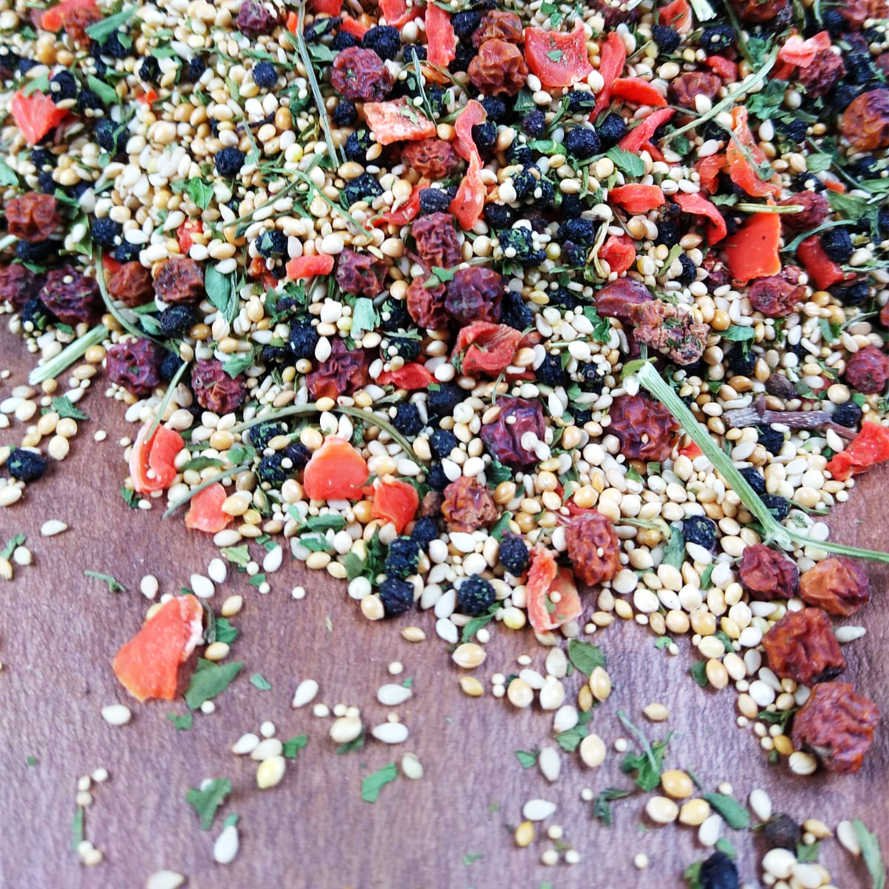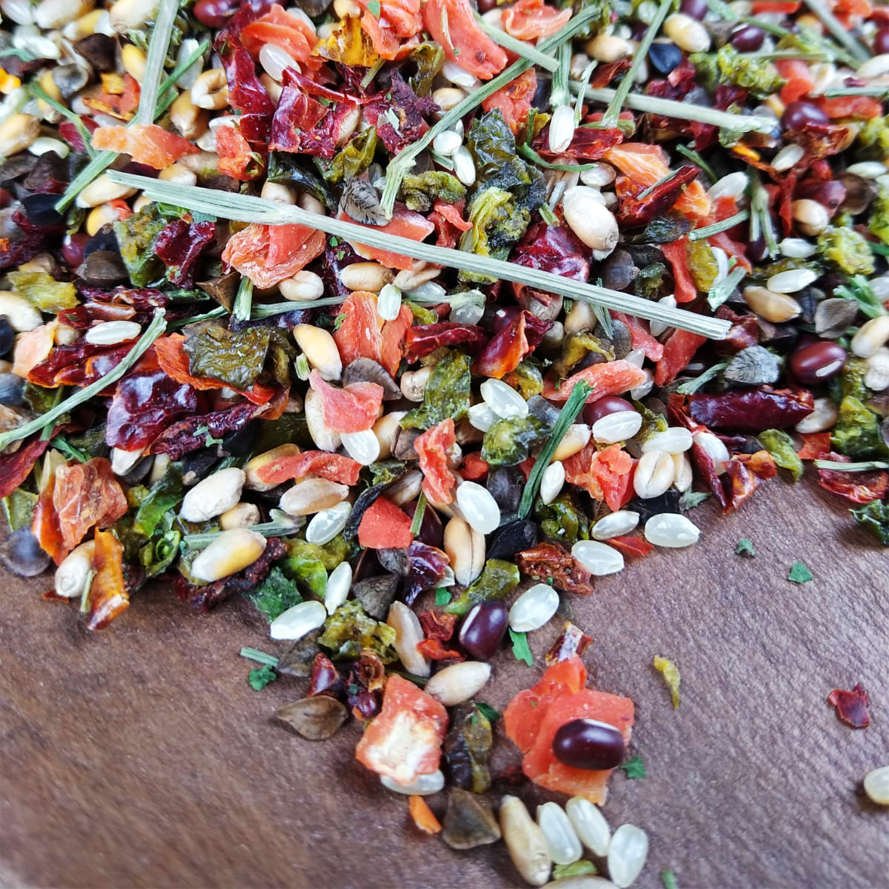
Healthy food for your lovebirds
Welcome to our online store for healthy agapornid and lovebird food. Here you will find species-appropriate food mixtures, which lovebirds need for a happy and healthy life. Let yourself be inspired by our selection of high-quality bird food and ensure the well-being of your feathered lovebirds!- balanced ratio of flour- and oil-containing seeds
- basic feed for agapornids
- ideal ratio of seeds containing flour and oil
- healthy herbs, flowers and grass seeds
- s mall seeds for smaller parakeets
- low in fructose
Content: 0.5 kg (€9.00* / 1 kg )
- balanced ratio between fruit and vegetables
- satiating
Content: 0.5 kg (€9.00* / 1 kg )
- Cooked food with vegetables based on wheat & rice
- for large parakeets & parrots
- satiating
Content: 0.5 kg (€9.00* / 1 kg )
- With 9 different flowers from natural medicine
- Flowers can also be used for tea
Content: 0.1 kg (€45.00* / 1 kg )
- ready-to-use sprouted food for large parakeets & agapornids
- important nutrients, minerals and vitamins
Content: 0.21 Liter (€21.86* / 1 Liter )
- improved recipe of grass and flower supplement
- 5 varieties of grass seed and 4 varieties of flowers
Content: 0.5 kg (€19.00* / 1 kg )
- 6 different grass seed varieties with fine herbs
- millet and grain-free
Content: 0.5 kg (€19.00* / 1 kg )
- Improved recipe of the Health Extra
- High-quality herbal seeds known from herbal medicine
Content: 0.5 kg (€20.00* / 1 kg )
- as a food supplement or tea
- suitable for all parakeets and parrots
Content: 0.5 kg (€22.00* / 1 kg )
Darüber freut sich dein Liebling...
What are agapornids and what are the species?
- Greyheads are the only species not native to the continent of Africa. They live on Madagascar and the adjacent islands.
- Blackheads spread out over Tanzania, Zambezi and Kenya. Unlike the sootyheads, they have a bright yellow breast.
- Peachheads inhabit only a small region in Tanzania. The range of the blackheads is only 50 kilometers further north.
- Rosyheads live in Namibia, South Africa, Botswana and Angola. Feral populations also live near Phoenix in Arizona, USA.
- Strawberryheads can be found in Tanzania, Zambia and Zimbabwe. They are a very small species among agapornids.
- Orangeheads settled in Guinea, Uganda and Ethiopia. There is also a small flock on the island of Sao Tome.
- Sootyheads are native to Zambia and Zimbabwe. The range is very small and they are thought to be extinct in Zimbabwe.
- The greenhead is also called collared insect. Liberia, Ghana, Cameroon and Gabon are their home. The catchment area is so large that one must distinguish three subspecies again geographically.
- The Taranta parrot is also called mountain parrot. They are found only in the highlands of Abyssinia in Ethiopia and Eritrea. They live there at altitudes of 1500-3000m.
The lovebirds as pets
However, the loving behavior can change from one moment to the other and the birds, which are also quarrelsome, go after each other. They should not be socialized with budgies or cockatiels. The nevertheless different species get into scuffles, where the Australian usually draws the short straw. Since lovebirds are quite curious fellows, everything is nibbled which can not run away. To remedy this, it makes sense to offer the enclosure with branches or shredding toys.













